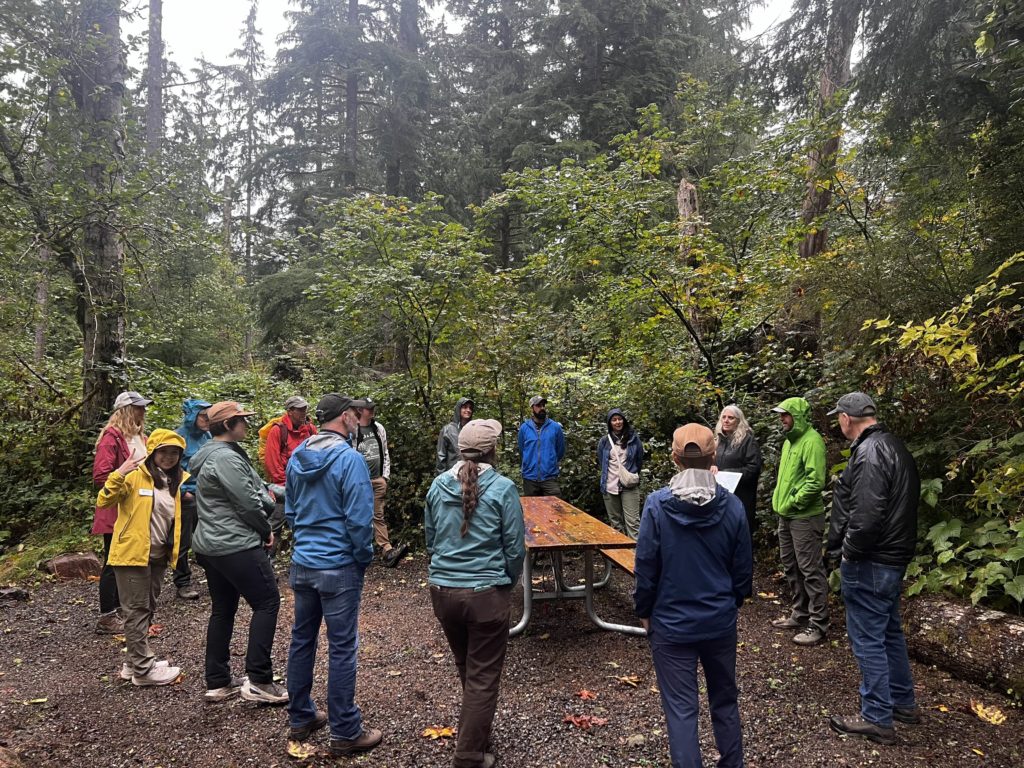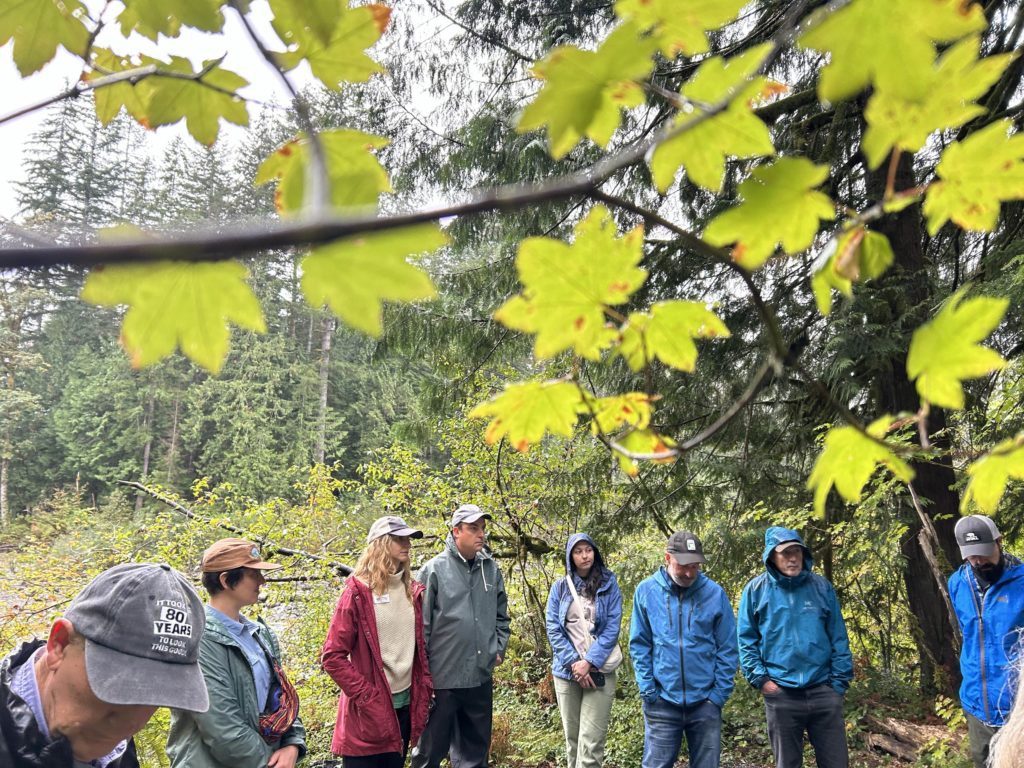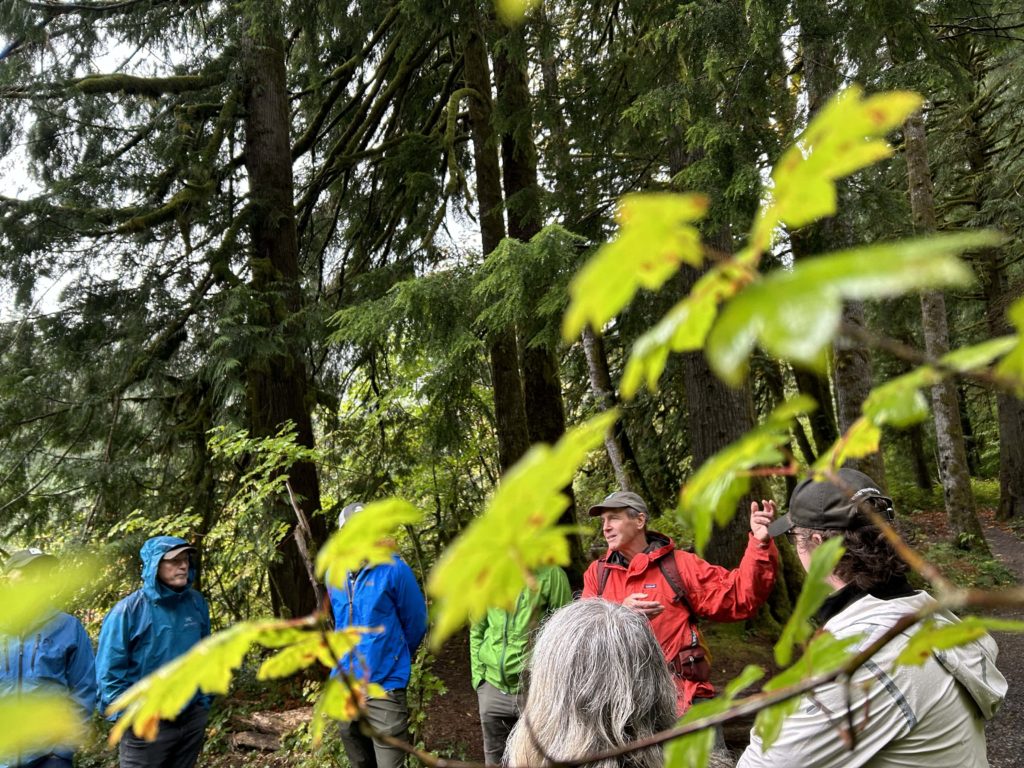All Photos and the event documented took place on the ancestral lands of the sdukʷalbixʷ (Snoqualmie),
Cayuse, Umatilla and Walla Walla people
Last week, the Coalition hosted an event at Mine Creek Day Use Area in the Middle Fork Snoqualmie Valley. This event included many partners, including the Snoqualmie Tribe, the Mountains to Sound Greenway Trust, the Department of Natural Resources, and Washington Trails Association. Thanks to those who came out to join us, despite the rainy weather!

Despite the number of partners listed, this still doesn’t capture everyone who has put in work and effort into all the projects that have been done in the Middle Fork Snoqualmie Valley. Over 90% of the Middle Fork is protected public lands—a remarkable achievement!
If you didn’t catch the event, I offer a short recap. However, I really encourage you to read up on all the work in the valley—it’s really inspirational! A good starting resource is the highlights on the Greenway’s work in the valley.
The Snoqualmie Tribe kicked things off, sharing about the importance of the valley for their ancestors. Miles of foot trails were crossed by members of the Snoqualmie Tribe and the river is a vital point of access for gathering and fishing in the valley. But, it’s not just historical. They emphasized how critical it is for current Tribal members to be able experience a connection to the land in the same way as their families did in the past, carrying on their cultural and spiritual traditions.
The Greenway detailed stories of the past – removing abandoned cars from the river, emptying out meth labs (in partnership with the relevant authorities, of course!), and establishing marked trails and reducing social trails to protect and conserve the valley. They’ve dedicated thousands of volunteer and staff hours to trail work, restoration, and programming in the area.

Washington Trails Associations has contributed over 1700 hours into trail maintenance in the area. They emphasized the importance of public funding—and the advocacy for that funding!—to continue the work in the area.
The Department of Natural Resources have multiple recreation and conservation projects in the Valley with investments totaling $14.9 Million. They’ve tried to be thoughtful about their projects, focusing recreation access in some areas and minimizing impacts in other areas to allow nature to flourish. The Mine Creek Site itself was shifted from a campground to a dedicated river access point and day use area for families, fishers, kayakers, and others.
A common theme throughout the event was the amount of funding necessary for this kind of work.. Work at this scale simply wouldn’t have been possible without funding from the WWRP.

Which leads me to an all-important plug: the Coalition is seeking $150 Million in funding for the WWRP in the next budget. It’s not just about what’s been created in the past, but what can be done in the future, too. The WWRP continues to serve all of Washington as the largest funding source for recreation and conservation in the state.
In the Middle Fork Valley alone, investments total over $20 Million in WWRP funds and these funds are crucial and reliable for ongoing work. In fact, you can read here about DNR’s proposed project for WWRP this funding cycle. The project will finalize the Teneriffe-Civilian Conservation Corps Connector Trail connecting the Mount Teneriffe trail system to areas along the Middle Fork Snoqualmie River.
Overall, the overarching theme was the amount of collaboration and commitment brought forward by so many organizations and people. Together, they’ve protected and restored a wonderful area that’s tucked away, but still close to North Bend!
For those interested, here is a google maps pin to the Mine Creek Day use area, feel free to check it out.
For me personally, this area has become a new hotspot of my own recreation – I’ve been learning and climbing more multipitch in the area in the newer established Garfield Ledges and Otter Falls routes. The experience of doing a work event in the area was great and reminds me how much effort and time organizations have put into the area, creating opportunities for others (like me in my climbing!). But, not only for people. The changes and improved infrastructure, guidance, and resources brought to the area also have served to protect and preserve the ecosystem and wildlife further 🙂

